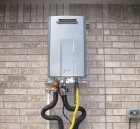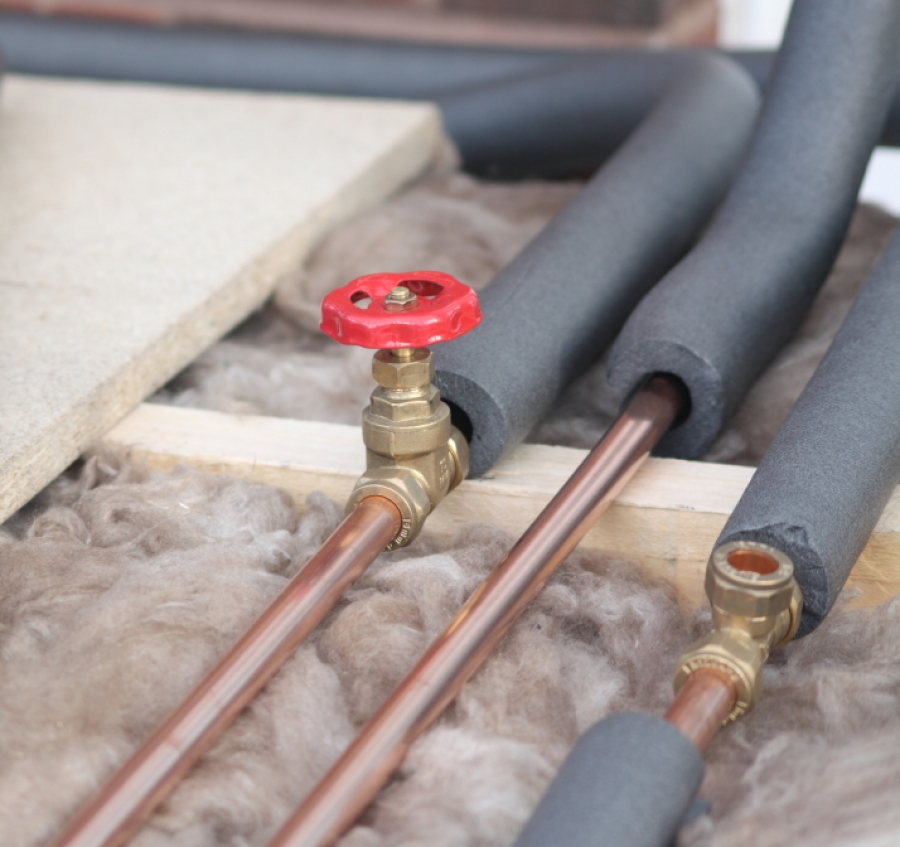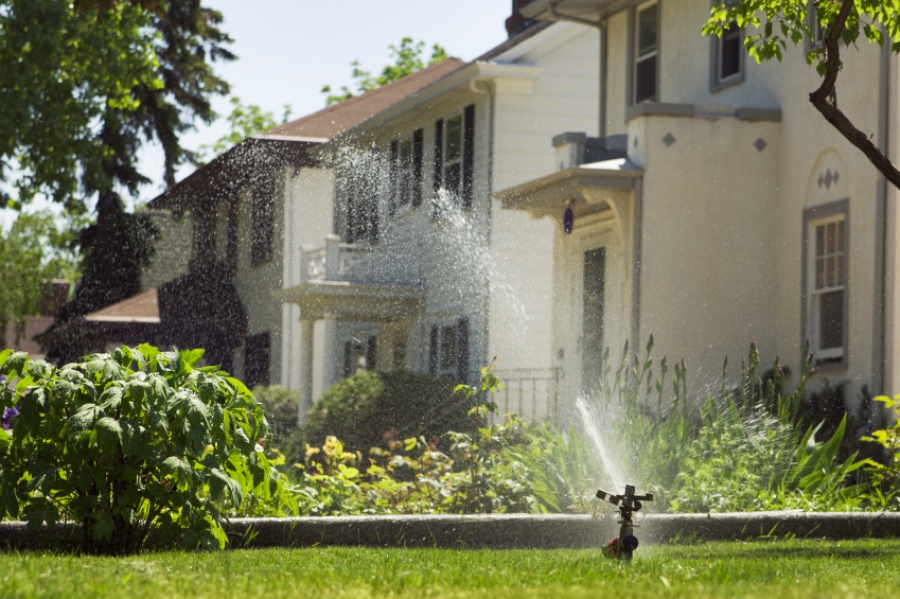Thinking of Buying a Solar Water Heater?
In the interests of energy efficiency, saving money, and protecting the environment, many homeowners are selecting alternative means of supplying daily utilities such as electricity and hot water. For example, solar water heaters can help homeowners successfully meet these growing interests.
 Image (CC BY 2.0) Sterling College
Image (CC BY 2.0) Sterling College
Even for residents in gloomy states, solar panels can greatly reduce power costs, let alone carbon footprints. In fact, because of solar power success in Germany, the state of Washington (a state that has overcast days 65% of the year) decided to copy Germany’s solar financial incentive programs.
Let’s take a closer look at some factors to consider before making a purchase decision.
What will you save when electing to use a solar water heater?
Energy. By using the sun’s free energy, you can reduce your hot water energy consumption by 70% to 90%, depending on where you live. That’s up to 90% less gas or electricity that needs to be produced. This is a significant value because most homeowners are unaware that their water heaters consume about 25% of their total monthly energy.
Money. According to the U.S. Energy Information Administration, the 2011 average annual electricity consumption for a U.S. resident was 11,280 kWh. Assume that the average national cost per one kWh is (and will remain for the duration of your water heater) $0.12. Assume that the average percentage of total energy consumed by your water heater is 25%. How much will your water heater cost you in 11 years?
Your answer is $ 3,722.40 or $ 338.40 per year.
You can purchase a high-quality solar water heating system for well under $2,000, meaning it will pay for itself and then some. Plus, you will be eligible for a Federal Tax Credit of 30% of total installed cost (no cap).
Environment. Not only will you save on your energy costs, but you will greatly reduce your carbon footprint by using the natural and free energy provided by the sun. Although it may sound like a surprising statistic, if 50% of North America’s households utilized solar water heaters, the reduction in CO2 emissions would equal the result of doubling the fuel-efficiency of all automobiles in North America.
Other details to contemplate
Assess the solar resource. If you own unshaded property that faces south, you are a good candidate for solar water heating. As previously mentioned, even if you live in a state prone to overcast weather, solar panels will work by absorbing both direct and diffused solar radiation.
Direct radiation, commonly known as “sunshine,” refers to solar beams that reach the Earth’s surface without hindrance. Diffused or indirect solar radiation refers to scattered solar beams. Scattering occurs when molecules and suspensoids in the atmosphere diffuse a direct solar beam.
Believe it or not, approximately 2/3 of all solar energy that reaches the Earth occurs in the form of indirect radiation.
Determine the right system size. Before diving headfirst into buying a water heater, you should first determine your hot water demand. This will not only tell you the size of the water heater needed, it will also offer insight into the solar-collection surface area required to maximize efficiency. In any situation, contractors can help to determine these variables.
Verify energy efficiency. In order to determine energy efficiency, you need to know two units: the solar energy factor (SEF) and solar fraction (SF). The solar energy factor (SEF) is defined as the energy delivered by the system divided by the electrical or gas energy put into the system. The efficiency scale ranges from 1.0 to 11.0, and higher numbers correlate to better efficiencies. Systems with solar energy factors (SEFs) of 2 or 3 are most common.
The other performance metric, the solar fraction (also called the solar savings fraction), is the share of total conventional hot water heating load (delivered energy and tank standby losses). Higher solar fractions result in a greater solar contribution to heating the water supply. This, in effect, reduces the energy demand of the backup water heater. The solar fraction range is between 0 and 1.0. Most solar factors fall between 0.5 and 0.75.
Evaluate and compare operating costs. Estimate the annual operating costs and compare several systems. This will help you to discover the energy savings and payback period of investing in a more energy-efficient system. It’s important to recognize that solar water heaters are a much more expensive initial investment than traditional heaters. Knowing the appropriate system size is critical before calculating operating costs.
Research building codes and protocols. Zoning and building codes relating to the installation of solar water heaters are typically established at the local level. Potential consumers should research their community’s requirements and find a professional contractor to install the unit(s). However, the U.S. Department of Energy offers helpful information on Building Codes and Regulations for Solar Water Heating Systems.
Perform routine maintenance. Just like any other appliance, a solar water heater requires periodic inspections and routine maintenance to sustain operational efficiency. Professional recommendations vary, but you should drain your water heater tank at least once a year. Draining removes built-up sediment and debris but will also help to maintain tank holding capacity. Using a maintenance scheduler can help by automating reminders.
If choosing a solar water heater isn’t the right option, but you’re still looking to reduce costs, consider looking into tankless water heaters.

Allstate
Use our Home Maintenance Reminder to simplify your life in just a few minutes. Learn about preventive maintenance and discover when to perform home maintenance tasks.
Website: www.allstate.com




